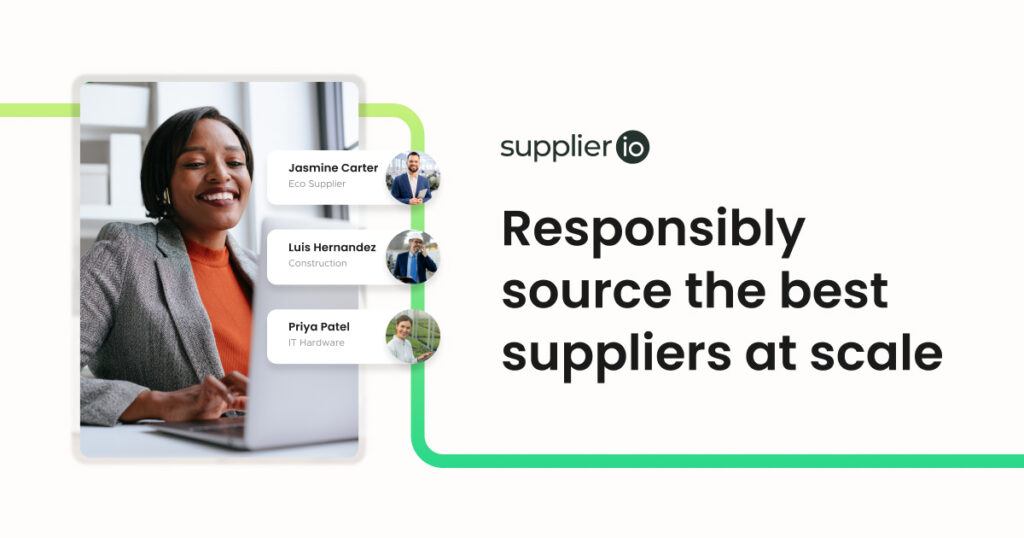Supplier Diversity Best Practices for 2024 with Enterprise Mobility
Supplier.io recently hosted an insightful conversation with Dwayne Norris, Supplier Diversity Manager at Enterprise Mobility, about how important it is for supplier diversity leaders.

Supplier.io recently hosted an insightful conversation with Dwayne Norris, Supplier Diversity Manager at Enterprise Mobility, about how important it is for supplier diversity leaders to use metrics to measure success. Enterprise Mobility operates in more than 90 countries and has a global fleet of 2.3M, with over 90,000 team members worldwide. It’s the seventh largest US company by revenue.
As supplier diversity becomes more critical to the business, it comes with several challenges, namely increased scrutiny and pressure. Dwayne Norris, Enterprise Mobility’s Supplier Diversity Manager, has a unique perspective and a particularly helpful approach to running a successful program. Why? He doesn’t have a long career in supplier diversity or procurement. The vast majority of his time with Enterprise Mobility has been on the business and operations side, and he only started serving in his supplier diversity role two years ago. This background gives him a deep understanding of data and metrics, which he leverages to make his supplier diversity program a success.
In his recent conversation with Supplier.io, Norris outlined several actionable insights that can help supplier diversity leaders combat the industry’s rising challenges in 2024.
Data Is Critical, Especially for the Business Unit
“Performance is king when you’re out in the field. Everything is quantifiable.” Norris realized early on in his role that he could attack supplier diversity the same way. He leveraged data as a way to not only track performance but also improve it. To plan accurate and achievable goals and to benchmark his efforts, Norris mentioned that data is what empowered him to see exactly where his efforts stood. And that’s essential for supplier diversity leaders today, given the mounting pressure from the business side of the company.
Once Norris had the business unit supplier diveristy spend data he needed, he could confidently set up meetings with various department heads, C-suite executives, and other decision-makers to walk them through the results. Providing context to leaders helped them become stronger partners in the long run. He said that it’s important to communicate the purpose of what he’s doing, as well as what’s in it for the company and for each leader he speaks with.
The Significance of Data
When it comes to something like RFPs, Norris said having a robust supplier diversity program is helpful. Many Enterprise Mobility customers ask them for information beyond simple questions like “What’s your supplier diversity program?” or “What’s your diverse spend?” He suggests supplier diversity leaders should be ready to share their program’s overall economic impact as well.
“That’s quantifiable, so it speaks directly to the impact that you’re having by having that diverse spend.” Supplier diversity leaders can show how many tax dollars they’ve generated, how many jobs they’ve created, and more as a result of diverse spend. Once that data and the economic impact has been obtained, it empowers Norris to tell the broader story to business leaders, which results in more buy-in and support.
Consider a “Heat Map” To Meet the Needs of the Business
Norris’ strategy involves an innovative “heat map” to identify and set goals based on the availability of diverse suppliers in different regions. For example, California has 80,000 diverse suppliers, while Rhode Island only has a few thousand. “The groups that would have more diverse and small suppliers, they also have higher spend goals than the groups that didn’t.”
Taking into account the available diverse suppliers in various groups this way, the heat map helps Enterprise Mobility set spend goals accordingly. But Norris also made sure to communicate this strategy to business leaders, showing them how it is the same approach Enterprise Mobility takes in the field. Norris’ ability to relate these strategies to business outcomes has been instrumental in securing executive buy-in and fostering a culture that values and pursues supplier diversity.
Conclusion: What Supplier Diversity Leaders Can Do
While companies’ internal processes may often resist change, the insights from Enterprise Mobility’s journey underscore the importance of innovative approaches and strategic thinking for supplier diversity leaders. The challenges of building and sustaining a successful supplier diversity program are numerous, but so are the opportunities. By embracing data, fostering partnerships, and focusing on economic impact, supplier diversity leaders can drive meaningful change within their organizations and beyond.
You can hear directly from Dwayne in this on-demand webinar or download the Best Practices for 2024 Report for additional insights from other leaders.




